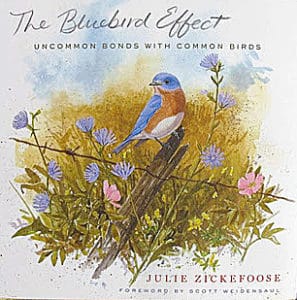 I was listening to the radio a while back when the DJ mentioned National Pizza Day. “Malarkey!” I said (or something like that.) Sure enough, when I did a Google search for national days, I found National Pizza Day listed on nationaldaycalendar.com. This is not to be confused with National Pizza Party Day (May 17.) Of course a little overlap is to be expected on a site that’s now tracking 1,500 national days, and where anyone can fill out a form to register a special day for annual recognition. I was relieved to see that the site doesn’t declare national days for individuals, since that literally requires an act of Congress.
I was listening to the radio a while back when the DJ mentioned National Pizza Day. “Malarkey!” I said (or something like that.) Sure enough, when I did a Google search for national days, I found National Pizza Day listed on nationaldaycalendar.com. This is not to be confused with National Pizza Party Day (May 17.) Of course a little overlap is to be expected on a site that’s now tracking 1,500 national days, and where anyone can fill out a form to register a special day for annual recognition. I was relieved to see that the site doesn’t declare national days for individuals, since that literally requires an act of Congress.
My feelings about acknowledging every day as a special day mirror my philosophy about doling out awards to everyone who participates in an event: if everyone is a winner, then no one is. If every day was ‘special’ we would burn ourselves out in a frenzy of celebration, and start looking forward to doing nothing. Plus, too many days spent overindulging and our pants would no longer fit. Don’t forget how you feel every year by January 1st! That said, I do have a soft spot for certain recently invented national days. May 4th as Star Wars Day appeals to the punster in me (“May the fourth be with you,”) while March 14th as National Pi Day, for the mathematical constant that begins 3.14, appeals to my inner geek. It also appeals to my stomach, since it’s a great excuse to eat the homonymous dessert: pie. Still, I am more of a traditionalist when it comes to holidays. Beyond our ten federal holidays such as Independence Day, and national observances like Mother’s Day, I was curious to learn more about the days we celebrated before the recent proliferation of national days. A search in the Minuteman Library Network unearthed several interesting volumes.
I learned that while it is tempting to think of nouveau holidays as a trend-driven by social media, the reality is that our penchant for partying predates widespread use of the Internet. Alice van Straalen’s The Book of Holidays Around the World (published in 1986) is a charming compendium that boasts “at least one reason to celebrate on every day of the year.” As promised, it includes international celebrations from Norway’s Constitution Day (May 17) to the Chinese Hungry Ghosts Festival (August 18), in which people make offerings of food, money, clothing and such to their ancestors. The layout of this book provides one occasion to celebrate per calendar day, so some of the reasons are a bit thin. Numerous entries rely on famous author birthdays. Nevertheless, there’s not a whiff of National Donut Day or the other stuff trending now.
Anyone who objects to the questioning of author birthdays as a reason to celebrate will likely adore A Reader’s Book of Days: True Tales from the Lives and Works of Writers for Every Day of the Year, by Tom Nissley. True to its title, this book offers a full page dedicated to each day of the year including author birthdays and death dates as well as other reasons to celebrate, or lament. Readers can rejoice in the publication of various works, from the first volume of Cervantes’ Don Quixote (January 16, 1605) to The Hitchhiker’s Guide to the Galaxy by Douglas Adams (October 12, 1979.) Or they can bow their heads over the misfortunes therein such as Ernest Hemingway’s various accidents and injuries, which are detailed across nine different dates! Births, deaths and other goings-on of fictional characters are also included. As an added bonus, Nissley thoughtfully introduces each month with a page of recommended reading.
As well as offering ideas for adding your own flair to holidays, The Book of New Family Traditions: How to Create Great Rituals for Holidays and Everyday by Meg Cox encourages finding new reasons to celebrate. In keeping with the other titles, it suggests celebrating author A.A. Milne’s birthday. It is, this book notes, important to personalize reading by having a sense of the author who created the characters we love. That, and “mid-January is a good time for a party, deep in the winter doldrums.” I have to admit that reading Milne at an indoor picnic with characters from the Hundred Acre Wood while munching on snacks made with honey sounds like a fine idea.
If we needed any further proof that people like to party, Anthony Aveni’s The Book of the Year: A Brief History of Seasonal Holidays offers insight into the origins of celebrations throughout the year. From “Happy New Year! But Why Now?” to “Christmas: From Resurrection to Rudolph,” Aveni progresses through the year offering a broad array of cultural perspectives. Of the origins of Labor Day, he writes that in 1882, “Defying authority, ten thousand men left their jobs and paraded up Manhattan’s Fifth Avenue…” They apparently then had a picnic and rounded out the day with fireworks. It was such a hit that they kept repeating it, until it was formally established as a holiday.
So it would appear that we’ve been drumming up excuses to celebrate for a long time. In spite of my protestations that I’m a purist, and although I balked at the gambit of National Pizza Day, even I could not resist the excuse to celebrate with a slice of Sicilian on February 9th. I guess that’s what bothers me: the fabrication of special days as excuses to indulge somehow diminishes the celebrating we do on days of real import. I love birthday cake but if I ate it every day it would be less special. Yet viewing each and every day as a cause for celebration isn’t an inherently bad idea. I just hope that we can balance out all of the hedonism with a bit of temperance (it will make those indulgences even tastier!) In the meantime, maybe we can celebrate with a little altruism. National Random Acts of Kindness Day, anyone? Technically it’s February 17th, but there’s an idea worth celebrating every day.
Kirstie David is the Literacy/Outreach Librarian at the Morrill Memorial Library in Norwood, MA. Look for her article in the May 23, 2019 issue of the Norwood Transcript.




